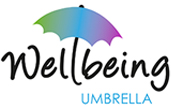7 Definite No-No’s When Crafting an Engaging Event Description
24th Sep 23
When it comes to organising events, whether they’re wellness workshops, educational talks or an online summit, one of the most crucial aspects of drawing participants is crafting an enticing event description.
However, it’s surprising how often organisers or speakers fall into the same traps that can deter potential attendees. Believe us we have seen it! So much so, we thought we’d share some of the common mistakes we’ve seen occur with event descriptions at our wellness events. Plus, offer you some helpful tips on how to avoid them. Now we’re trusting you’re happy and confident with your title already, but if not we have an article called Creating The Perfect Talk Title that can help! Okay, let’s get started.
1. Lack of Clarity
Imagine stumbling upon an event description that leaves you scratching your head, unsure of what the event is all about. Unfortunately, this happens more often than you’d think. The first and foremost rule in event description writing is clarity. Attendees should instantly grasp the event’s topic or subject matter just by reading the description.
Our Tip: Use clear, concise language. Avoid jargon or ambiguous terms. If your event is about a particular wellness practice, explicitly mention that in the first few lines.
Example: Discover Mindful Yoga to Aid Stress Relief.
Immerse yourself in an hour of relaxation and self-care. Learn yoga poses, breathing techniques and mindfulness exercises to reduce stress and promote overall wellbeing. All levels welcome. Leave feeling rejuvenated and centred.
2. Vague Event Description

Ambiguity can be a major turn-off for potential participants. Here’s a great example of a vague event description.
Join me for an unforgettable experience that will change your life. Get ready to be inspired and motivated like never before. Don’t miss this opportunity to transform yourself and achieve your dreams.
Have you figured out what the talk or event is about? No, us neither! Sadly, using overly general language or buzzwords without providing context can leave readers feeling bewildered and uninterested.
Our Tip: Back up your claims with examples and specifics. Instead of saying, “Change your life,” try, “Learn mindfulness techniques to reduce stress and improve overall wellbeing.” You’ve got to admit, it’s a lot clearer!
3. A Short and Uninformative Event Description
Believe it or not but we have had a short sentence submitted as an event description a few times. Just so you know, a one-sentence event description might leave people wondering whether the event is even worth their time. And you don’t want that to happen. To attract participants, you need to provide a detailed overview of what they can expect.
Tip: Include the event’s key details, such as the event outline, benefits and any unique features. Offer a sneak peek into what attendees will experience, learn, or gain.
Example: Join us for our ‘2nd Healthy Living Summit: A Journey to Wellness’ on Saturday, October 30th. In this full-day event, you’ll have the opportunity to engage with expert speakers and wellness practitioners. Learn about topics such as nutrition, stress management, fitness and mindfulness.
Enjoy interactive workshops, cooking demonstrations and personalised wellness assessments. Participants will leave with a comprehensive understanding of how to lead a healthier and more balanced life. Don’t miss this chance to invest in your wellbeing and connect with like-minded individuals on the path to wellness.”
4. Failure to Highlight Benefits

People are naturally drawn to events that promise value and benefits. If your event description doesn’t explain what participants will gain, you’re missing a golden opportunity.
Tip: Clearly outline the benefits of attending your event. Describe how it will improve attendees’ lives, skills or knowledge. Use phrases like, “By the end of this workshop, you’ll be equipped with…”
5. Ignoring the Target Audience
Every event has a target audience, whether it’s beginners, experts, a specific health topic or professionals in a particular field. Failing to mention this can lead to confusion and deter potential attendees.
Tip: Specify who will benefit most from your event. If it’s a wellness workshop for beginners, state it upfront. Make it crystal clear who your event is designed for.
Example: Join us for an inspiring hour with Health Coach Sarah Johnson, an expert in personal development and self-esteem enhancement. In this engaging session, you’ll gain practical strategies and insights to strengthen your self-esteem, nurture self-confidence and overcome self-doubt.
Whether you’re on a journey of self-discovery or seeking that extra boost of self-assurance, Sarah’s expertise will empower you to thrive. Don’t miss this opportunity to embark on a path to greater self-esteem with one of the most trusted health coaches in the field.
6. Overloading Event Description with Information

While providing details is crucial, overwhelming the reader with an avalanche of information is also a common mistake. Finding the right balance is key.
Tip: Focus on the most relevant and compelling information. Use bullet points or subheadings to break down the content, making it easy for readers to skim and absorb key details.
7. Not Showcasing Credentials
If you’re a wellness professional with relevant qualifications or experience, don’t keep it a secret. Mentioning your credentials can help build trust and credibility.
Tip: Include a brief bio or mention your qualifications and experience related to the event topic. This reassures potential attendees that they’re in capable hands.
Example: Join Emily Roberts, a seasoned psychologist and mindfulness expert, as she shares practical mindfulness techniques for stress reduction. Discover science-backed strategies to boost your mental and emotional wellbeing.
Event Description Take Home Message
To wrap this up, crafting an engaging event description is crucial for attracting participants to your wellness event or talk. Avoid the common mistakes we shared and remember to:
- Prioritise Clarity.
- Eliminate Vagueness.
- Offer Detailed Information.
- Highlight Benefits.
- Specify the Target Audience.
- Find a Balanced Information Approach.
- Showcase Credentials.
By following our tips, you can create a compelling event description that captivates your ideal audience and drives participation in your event or talk. Remember an effective event description is the first step in making your event a success!
Ps. Don’t forget we run online events and if you’re interested in speaker opportunities with us as a wellness practitioner, you can learn more HERE.
Other relevant blogs
Disclaimer: The information contained within this article is for general information purposes only and does not constitute advice on which you should rely. Professional or specialist advice should always be sought before taking any action relating to your business. Read full website terms of use.















